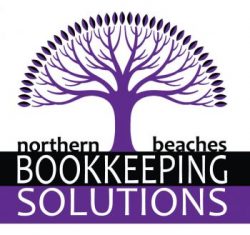SuperStream is a mandatory electronic payment system for superannuation contributions in Australia. Designed to streamline super payments and reduce paperwork, SuperStream ensures that superannuation data and payments are transmitted in a consistent and secure format. Here’s what small businesses need to know about meeting their SuperStream obligations and staying compliant with ATO regulations.
What Is SuperStream?
SuperStream is a government initiative that requires employers to pay super contributions electronically while sending corresponding payment data in a standardised format. This system ensures that contributions reach the correct employee super funds efficiently and accurately.
Who Must Comply With SuperStream?
All employers in Australia, regardless of size, must comply with SuperStream requirements when making superannuation contributions for employees. This includes:
- Sole traders and small businesses
- Companies and trusts
- Non-profit organisations
SuperStream Payment Methods
Employers can meet their SuperStream obligations by using one of the following payment methods:
- Payroll Software: Most accounting and payroll software, such as Xero, MYOB, and QuickBooks, are SuperStream compliant and can automatically process super payments.
- Super Clearing House: The ATO’s Small Business Superannuation Clearing House (SBSCH) is a free service for small businesses with fewer than 20 employees.
- Third-Party Providers: Approved SuperStream providers can handle super payments and reporting on your behalf.
How to Set Up SuperStream
To set up SuperStream for your business, follow these steps:
- 1. Register for Payroll Software: Choose a payroll solution that is SuperStream compliant and set up employee details, including super fund information and employee Tax File Numbers (TFNs).
- 2. Verify Super Fund Details: Ensure that each employee’s super fund is SuperStream ready. Obtain the super fund’s unique identifier (USI) and bank details.
- 3. Collect Employee Super Information: Request Super Choice forms from employees to confirm their nominated super fund details.
- 4. Make Super Payments Electronically: Process super payments through your payroll software, clearing house, or third-party provider. Ensure that payment data is submitted in the SuperStream format.
- 5. Keep Records of Payments: Maintain records of super payments, including payment dates, amounts, and recipient fund details.
SuperStream Reporting Requirements
When making SuperStream contributions, employers must provide the following data for each payment:
- Employee name and Tax File Number (TFN)
- Payment amount and payment date
- Unique Superannuation Identifier (USI) for the fund
- Payment reference number to track the transaction
Common SuperStream Mistakes to Avoid
To avoid ATO penalties and ensure compliance, be aware of these common SuperStream mistakes:
- Failing to include all required data in SuperStream payments
- Submitting payments outside the required quarterly deadlines
- Incorrect employee details, such as TFNs or super fund USIs
- Not reconciling super payments against payroll records
SuperStream Payment Deadlines
Super payments must be made at least quarterly, with the following deadlines:
- 1st Quarter (July – September): Due by 28 October
- 2nd Quarter (October – December): Due by 28 January
- 3rd Quarter (January – March): Due by 28 April
- 4th Quarter (April – June): Due by 28 July
Need Help With SuperStream Compliance?
Managing SuperStream obligations can be complex, especially for small businesses without dedicated payroll staff. Northern Beaches Bookkeeping Solutions offers comprehensive payroll and superannuation services to help you stay compliant and avoid ATO penalties. Contact us today to learn more about our SuperStream services and payroll solutions.
